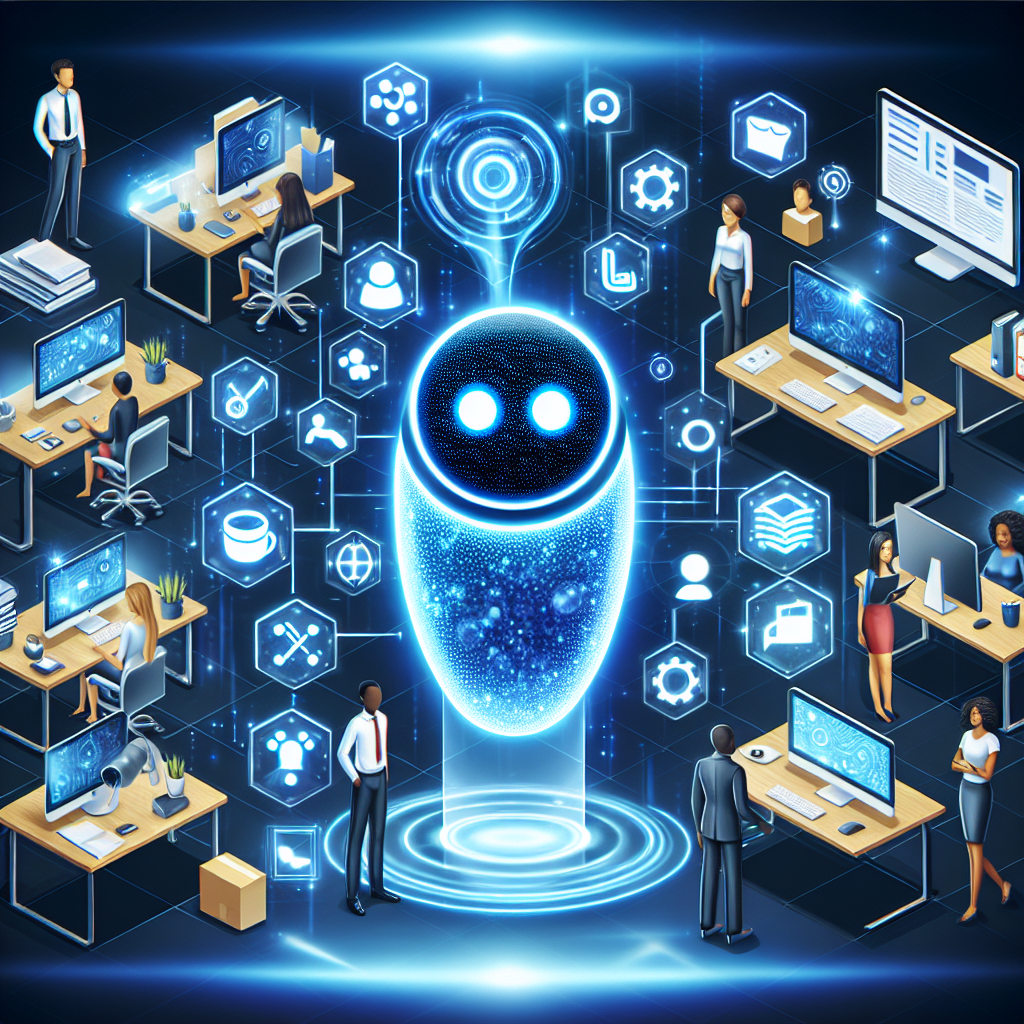Artificial Intelligence (AI) has been rapidly transforming the way we work and live, with virtual assistants playing a key role in revolutionizing workplaces across industries. From increasing productivity to improving customer service, virtual assistants have unleashed a new level of efficiency and effectiveness in the modern workplace.
Virtual assistants are intelligent software programs that can perform tasks and provide assistance to users based on voice commands or typed messages. These assistants are powered by AI algorithms that enable them to understand and interpret human language, learn from interactions, and adapt to user preferences. Virtual assistants can perform a wide range of tasks, from scheduling meetings and sending reminders to conducting research and analyzing data.
One of the key benefits of virtual assistants is their ability to streamline routine tasks and free up employees to focus on more strategic and value-added work. By automating repetitive tasks such as data entry, email management, and appointment scheduling, virtual assistants can help employees become more productive and efficient. This not only saves time but also reduces the risk of human error, leading to higher accuracy and reliability in work processes.
Furthermore, virtual assistants can provide personalized support and assistance to employees, enhancing their overall work experience. By understanding individual preferences and behavior patterns, virtual assistants can anticipate needs, provide recommendations, and offer timely assistance. This personalization not only improves employee satisfaction but also fosters a more engaged and motivated workforce.
In addition to enhancing productivity and efficiency, virtual assistants are also transforming customer service and support functions in the workplace. By leveraging AI and natural language processing capabilities, virtual assistants can interact with customers in a human-like manner, providing prompt and accurate responses to inquiries and resolving issues in real-time. This not only improves customer satisfaction but also reduces the burden on customer service teams, allowing them to focus on more complex and strategic tasks.
Moreover, virtual assistants are also driving innovation and creativity in the workplace by enabling employees to access a wealth of information and insights at their fingertips. By leveraging AI algorithms to analyze data and provide recommendations, virtual assistants can help employees make informed decisions and drive business growth. This data-driven approach empowers employees to explore new ideas, experiment with different strategies, and drive innovation in their respective roles.
However, despite the numerous benefits of virtual assistants, there are also some challenges and concerns associated with their adoption in the workplace. One of the key challenges is the potential impact on job roles and responsibilities, as automation may lead to job displacement or changes in job requirements. Organizations need to carefully consider how to upskill and reskill employees to adapt to the changing nature of work brought about by virtual assistants.
Furthermore, there are also concerns about data privacy and security, as virtual assistants require access to sensitive and confidential information in order to perform tasks. Organizations need to implement robust security measures and protocols to ensure the protection of data and prevent unauthorized access or misuse of information by virtual assistants.
Additionally, there may be limitations in the capabilities of virtual assistants, particularly in complex and nuanced tasks that require human judgment and creativity. While AI algorithms continue to advance, there are still areas where human intelligence and empathy are irreplaceable, and organizations need to strike a balance between automation and human intervention in the workplace.
Despite these challenges, the power of AI and virtual assistants in transforming workplaces is undeniable. By harnessing the capabilities of virtual assistants, organizations can drive efficiency, innovation, and productivity in the digital age. From automating routine tasks to enhancing customer service and driving business growth, virtual assistants are reshaping the future of work and paving the way for a more intelligent and sophisticated workplace.
FAQs:
1. What is a virtual assistant?
A virtual assistant is an intelligent software program that can perform tasks and provide assistance to users based on voice commands or typed messages. Virtual assistants are powered by AI algorithms that enable them to understand and interpret human language, learn from interactions, and adapt to user preferences.
2. What tasks can virtual assistants perform?
Virtual assistants can perform a wide range of tasks, from scheduling meetings and sending reminders to conducting research and analyzing data. They can also provide personalized support and assistance to users, enhancing their overall work experience.
3. How can virtual assistants benefit the workplace?
Virtual assistants can streamline routine tasks, improve productivity, enhance customer service, drive innovation, and increase efficiency in the workplace. By automating repetitive tasks and providing personalized support, virtual assistants can help employees become more productive and engaged.
4. What are the challenges associated with virtual assistants?
Some challenges associated with virtual assistants include job displacement, data privacy and security concerns, and limitations in capabilities for complex tasks. Organizations need to carefully consider these challenges and implement appropriate measures to address them.
5. How can organizations maximize the benefits of virtual assistants?
Organizations can maximize the benefits of virtual assistants by upskilling and reskilling employees, implementing robust security measures, and striking a balance between automation and human intervention in the workplace. By leveraging the capabilities of virtual assistants effectively, organizations can drive efficiency, innovation, and productivity in the digital age.
